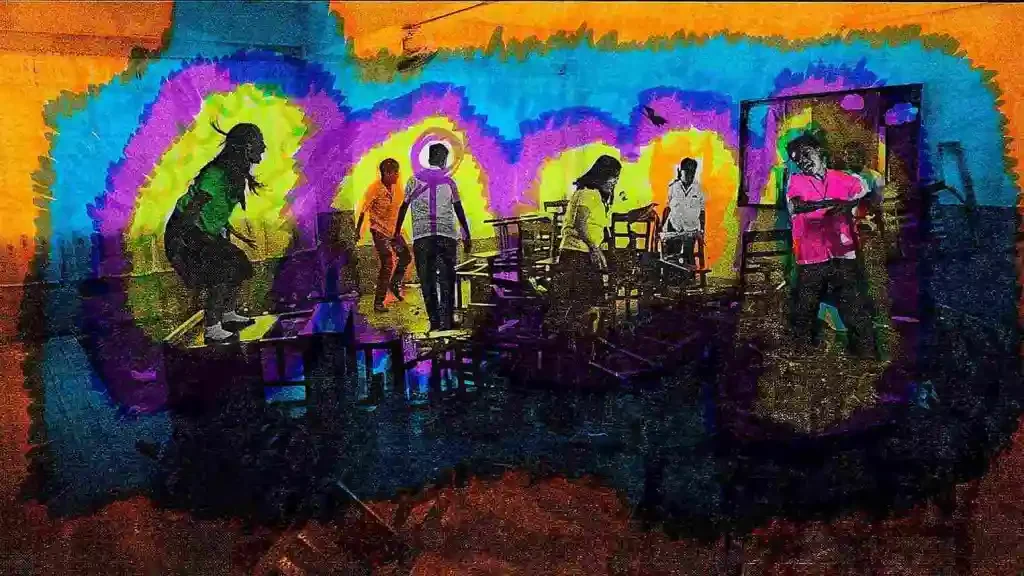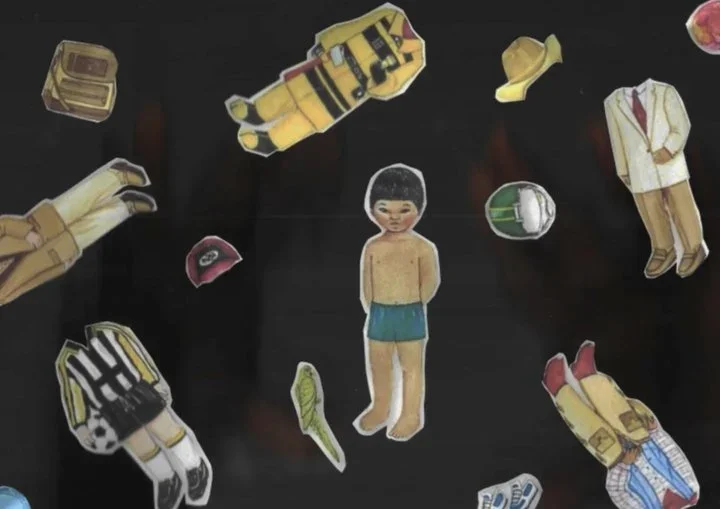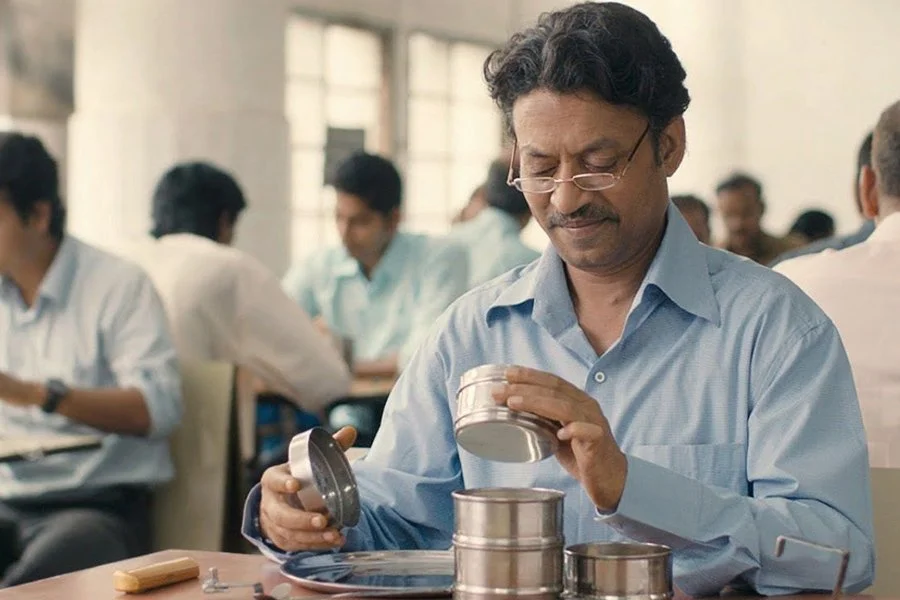For the Love of Mixed Media: A Film Program
For the Love of Mixed Media: A Film Program
Feature art by Kyle Livelo
Ever since Glenn Barit’s Cleaners premiered at the 2019 QCinema International Film Festival, it has instantly become a local cult classic, being cited by most Filipino cinephiles as their entry point to Philippine regional cinema. Through photocopying and highlighting techniques, Barit can recreate those intense or mundane high school memories. His treatment and the way he chooses to remember the nostalgia make these memories more cathartic than ever. Exploding colors in a black and white setting, despite being an overall tragedy of youth, for those brief moments of screaming in the classroom are only a brief moment of fantasy before adulthood and reality will ground them. The experimentation with different animation styles and media and their associated contexts makes Cleaners an influential piece for future aspiring filmmakers to apply these similar techniques in making the personal and political known and explode onto the screen and into the viewers.
Still from Cleaners
The culture of short films continues to defy commercialization as its diversity in content, material, and style makes it a movement of its own where filmmakers can freely express their personal and political motives without being too conscious and reliant on the political economy. An influential piece like Cleaners has also made waves for emerging filmmakers to experiment and apply mixed media techniques in their storytelling to show how these stories mirror a social reality in contemporary times, as well as asking for change in these systemic errors. And with mixed media, the filmmaker maximizes their imagination in interpreting the personal and political, as well as taking a creative risk.
Curated from the archives of Cinemata, For the Love of Mixed Media how different materials and techniques are applied to contemporary Filipino narratives, a form of resistance. Using mixed media techniques is more than just an artistic achievement, but it’s also a necessary tool in expressing those desired intentions and messages on screen and to the viewers.
From expressing love and identity to historical imaginations and contradictions, this virtual film program also gives a brief understanding of the current status quo of how the Filipino youth understands society and how their imaginations through their short films give alternative contexts and subcontexts of their understanding of various problems ever present in society.
IT’S A BIGGER WORLD
The program starts with an exploration of the self and their understanding of their identities and history, wrapped with conflicting ideals and denials of things and desires they want to wish or forget in the first place.
Screencap from Barangay Hero: Tips Kung Pano Siya Mapa-Sayo!
Barangay Hero: Tips Kung Pano Siya Mapasayo
Dir: Josiah Tollison
Josiah Tollison’s Barangay Hero: Tips Kung Pano Siya Mapasayo maximizes one’s imagination and innocence, taking the conventional how-to-win-your-crush storyline and being more wild and honest with it through how the main character envisions this epic quest would be. The awkwardness and cheesiness of the main character’s actions are reinvisioned as something grander, making their expressions as seen by the camera as big and filled with colors drawn by crayons, capturing that youthful and immature imagination and understanding of their feelings and reality, and simply just celebrating innocence and love.
Screencap from Embracing Lilet
Embracing Lilet
Dir: Sean Verdejo
Sean Verdejo’s Embracing Lilet captures that would-have-been dream where one wishes a life not bound by gender constructs. The photocopy machine, the archival memories, and the paper dolls represent those dreams of a child who just wants to express themselves, whatever they want to be, free from fear. A paper doll image that chooses for themselves, and not for someone to impose to dress them up.
Screencap from floating in between
floating in between
Dir: Ciara Julienne Junsay
Ciara Julienne Junsay’s floating in between encapsulates that trip-down-memory-lane, evoking nostalgia, and recollections of the past she’s trying to move on from. The scrapbook visuals and doodle-like diary entries capture those experiences one cherishes every moment and memory, no matter how happy or sad they might be, but still filled with exploding colors as they choose to remember them. No scene is not bright and colorful, and everything is glued to its place as it analogizes how one clings to these specific memories.
IT’S RELATIONSHIP ADVICE
The program then shifts to an imagination of relationships, how one not only sees themselves but also how the other person, or a collective imagination, sees them, how one affects the other, making their relationship a product of unresolved tensions.
Screencap from All the Things Left Unsaid
All the Things Left Unsaid
Dir: Josh Van Ulric Campo
Josh Van Ulric Campo’s All the Things Left Unsaid takes the fleeting time of being preoccupied with doing laundry to drown one’s thoughts and imaginations of their childhood past of what they could’ve wanted to be. Reimagining his laundry as his world, his ocean filled with colorful fishes, but him with her mother makes that unfulfilled identity faceless and invalidated, and he allows himself to drown in the cycle of unfulfilled thoughts, just like a washing machine, until he realizes it’s just him that needs to love himself and his childhood self more.
Screencap from APAPATIKANSIMANSIM
APAPATIKANSIMANSIM
Dir: Andreia Leigh Bernardo
Andreia Leigh Bernardo’s APAPATIKANSIMANSIM explores the evolution of a familiar relationship on how one looks back in archival thoughts and how one sees the present in their everyday interactions and self-reflections. The evolution of time lost raptures that identity and imagination one chooses to remember their relationship with, from their childhood photos now filled with white markers and incomplete thoughts in red inks, to how they long to embrace that paternal love in surreal imagery of a melted ice.
Screencap from Feet Apart
Feet Apart
Dir: Dexter Paul De Jesus
Dexter Paul De Jesus’s Feet Apart takes the otherness that society has created during the past pandemics, which forces people and families to have strained relationships, all due to the lack of information and unequal access to health care, to have it as something to blame for. The long tables, the facade home, and the family drawn differently from real people capture how society forces them to look differently and see themselves differently, and in the end, ruptured their familial relationships and their supposed to be their primary safe space in a world health crisis.
IT’S A SYSTEMIC PROBLEM
The program's last section explores society and its intersectional understandings and reinterpretations of the many social issues and realities that contemporary Filipino society faces.
Screencap from Beep Beep
Beep Beep
Dir: Iane Patacsil
Iane Patacsil’s Beep Beep contextualizes the multiverse as an intersectional societal struggle of the transportation crisis the country is currently facing. Filled with popular culture references and a mix of different animation styles, the film emphasizes that a simple decision of simply not paying your jeep fares in full can affect the bigger systemic dysfunction.
Screencap from Sa Mga Mata ng Bata
Sa Mga Mata ng Bata
Dir: Cyril Chauncy Cruz
Cyril Chauncy Cruz’s mixed media attempt in Sa Mga Mata ng Bata is only short, but it already encapsulates the intended message of how authoritarianism takes the form of familial love, influencing how a child thinks of human rights violence as a goodwill action to maintain order. Depictions of his idol or hero of a murderer father, as a perpetrator of violence, filled with positive children’s drawings, become haunting revelations of authoritarianism.
Screencap from Lingkis
Lingkis
Dir: Yvonne Elizabeth G. Salazar & Isabel Margarita P. Valenzuela
Yvonne Elizabeth G. Salazar and Isabel Margarita P. Valenzuela’s Lingkis mixes mythology and history, reinterpreting the bakunawa as an already-recurring phenomenon that has never left the country, and one that manifests itself in various shapes and forms and as a different entity from its predecessor, but continues the same instrument of fascism in the guise of democracy. Using clay motions and paper cutouts for the shapeshifting monster and emphasizing specific testimonies from the filmmaker’s own words and their recordings, the film presents the bakunawa as always lurking and ever-present unconsciously in everyone’s thoughts, which begs to question if it can be vanquished when the people created the very monster. It’s pessimistic, but it also acknowledges the strength of the masses and the collective struggle to oust past monsters, and all it has to take is persistence.
Screencap from This is How Her Home Was Built
This is How Her Home Was Built
Dir: Jaime Morados
Jaime Morados’ This is How Her Home Was Built complicates the narrative of historical distortion as no easy means to learn oneself from the truth. It becomes an allegory of the collective struggle on how historical distortion impacted everyone’s understanding of their history and even the understanding of what is home. Historical distortion is a human experience, as it humanizes the protagonist with fears and confusions while being surrounded and wrapped with claylike figures of fascist abuse and newspaper cutouts of disinformation, as products of its machine. It confronts the perfection of society portrayed by the historical distortion machine, which forces everyone to become critical and awakened.
With mixed media, this gives more creative and alternative expressions of how detrimental or deadly these narratives presented are and how a maximalist approach disfigures these illusions of a perfect world, making them more legitimized and seen and realized. These short films not only challenge the normative way of making a film but also how one sees and understands it, reinterpreting social reality and reimagining it in the most vibrant colors.





























